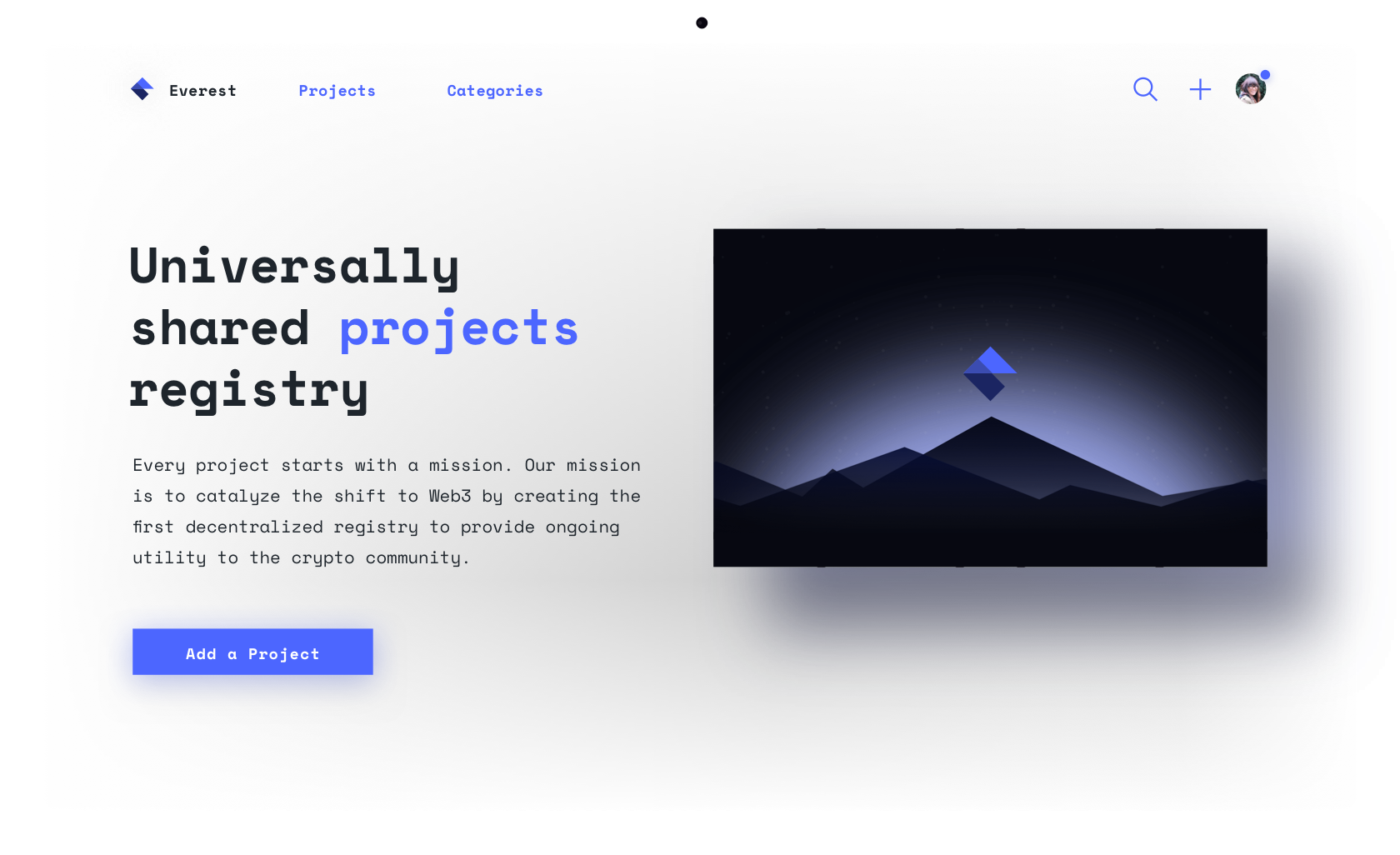Tough times
Web3 has been under fire by skeptics who think decentralized applications (dApps) will never be made compelling enough for widespread adoption. Could it be that the only value of crypto is censorship resistance? Might it be impossible to build a dApp with mainstream appeal?
We at The Graph believe that Web3 is going to be the next big platform and that millions of dApps will come to market and displace Web 2.0 monopolies.
Not only that but we expect to see the first dApps achieve product market fit this upcoming year, in 2020.
Centralized services
have us trapped
The web's client-server architecture gives absolute power to whoever runs the server - usually the application developer or SaaS provider. This results in pervasive centralization, negatively impacting users and developers.
Unreliable
Centralized services can be shut down at any timeRestrictive
Users are locked into proprietary platforms that limit freedom of choiceExtractive
They engage in rent seeking behavior that disadvantage individuals

What if crypto could break us out?
Decentralized infrastructure can create a stable foundation for software. Instead of handing over control to companies, we can use blockchains, p2p networks, and service protocols to transact directly and regain control. We'll be able to scale human coordination on the internet so that individuals have more flexibility, opportunity, and choice in their work and personal lives.

What is a dApp?
A dApp is an application that's entirely built on decentralized protocols. We're still discovering the best architecture and design patterns so the term is amorphous until the community converges on a standard definition. Web3 is a broad umbrella that encompasses diverse use cases like Marketplaces, DeFi, Governance, Entertainment, and more.
The real benefits of Web3
Web3 will enable developers all over the world to band together to create network effects around open source code and interoperable data that allow them to successfully compete against incumbents. The dApps they build will have strong advantages over existing apps.
Agency
Own your identity, data, and reputationInteroperability
Seamlessly switch between dAppsReliability
Guaranteed to run forever on reliable public infrastructureMoney
Built in money and financial contractsSecurity
Safe, secure, and private
Winning over developers
Developers are what make a platform. At the end of the day developers want to build good products and make money. They are often creative individuals that prefer personal freedom and open source. If Web3 becomes the best place for developers to build applications and reach users, developers will choose Web3.

Diagnosing the sentiment
One of the reasons that sentiment has dimmed on Web3 is that there aren't many dApps with significant usage. We shouldn't be surprised that a platform that's still under development doesn't have many users.
The infrastructure isn't ready yet.
It's taken projects 2-3 years to build usable dApps and usable is a relative term. Most dApps have limited functionality and are still clunky to use. We shouldn't expect there to be users until the infrastructure is mature enough to support competitive applications.
Beyond UX, we believe that some prevalent myths have hindered the development of dApps.
People care enough about privacy and self-sovereignty to suffer a degraded user experience
Users seem to value convenience, ease of use, and functionality above idealism.
Decentralization is too expensive and can't win against centralized services
Base layer security is expensive but many trust-minimized services can be rendered cheaper than centralized counterparts. With sidechains, state channels, and other protocols, the cost to use a dApp can be in the cents per month.
Protocols and dApps don't have business models
Tech innovation often requires business model innovation. We believe protocol business models like work tokens will be proven in 2020 and that business models for dApps will be demonstrated, though they'll require more users to produce big revenue.
People will use dApps so they can be owners and make money from token appreciation
In our view this is a weak value proposition. Long term price appreciation is not an adequate incentive to alter most behaviors.
Products need to solve real problems for people. Problems like: I need to find a job, I need to share an idea, or I need to express myself. dApps need to solve problems and do so better than Web2 apps for people to use them.
This is what we mean when we say product market fit. Given a problem, there's a group of people for which this product is the best solution to that problem that they can get their hands on.
When are dApps going to reach product market fit? Is it in 5 or 10 years? Absolutely not. We expect to see dApps with product market fit next year, in 2020.
Game plan
- Get to product market fit with an initial set of dApps
- Get the crypto community to switch over
- Grow based on the quality of the products
We expect that every industry will eventually move to Web3 once great products come to market and network effects kick in. We think the best way to kickstart this process is to build mass appeal products but target them at our own community first. Once we reach a critical mass, we can branch out to mainstream users.
The first step
Everest is an experiment we've been quietly building in collaboration with MetaCartel. We asked ourselves “Wha's something simple we can build on Web3 that would be useful enough for the crypto community to use on a regular basis?”
We landed on Everest - an open projects registry.

Everest seeks to be the best place to find and stay up-to-date on crypto projects.
Everest will allow users to add projects, define categories for better organization, and link to other resources. dApps will be able to reference these projects instead of maintaining their own internal databases. We'll be launching Everest soon and hope you'll join us in jumpstarting the network effects for Web3. As the platform grows, we plan to link to personal profiles, jobs, events, and blogs - all curated on Web3.

The next big platform
After the core primitives for the web solidified, innovation exploded. Millions of websites got built and changed how information's shared globally.
After the iPhone was released a wave of mobile apps came to market making use of the phone's new capabilities.
Web3 has its own unique capabilities. Developers will have better building blocks with open API's and programmable money. Users will have more control and freedom of choice. Once we put these pieces together into a compelling package that developers can easily build on, a new race will start.
We are getting close to the starting line. Just like Ethereum allowed a wave of innovation that ignited the imagination, engineers working on decentralization are going to build one level up from there. The Web3 platform, made of many protocols and components, will reignite creative spirits and
Summer will return

